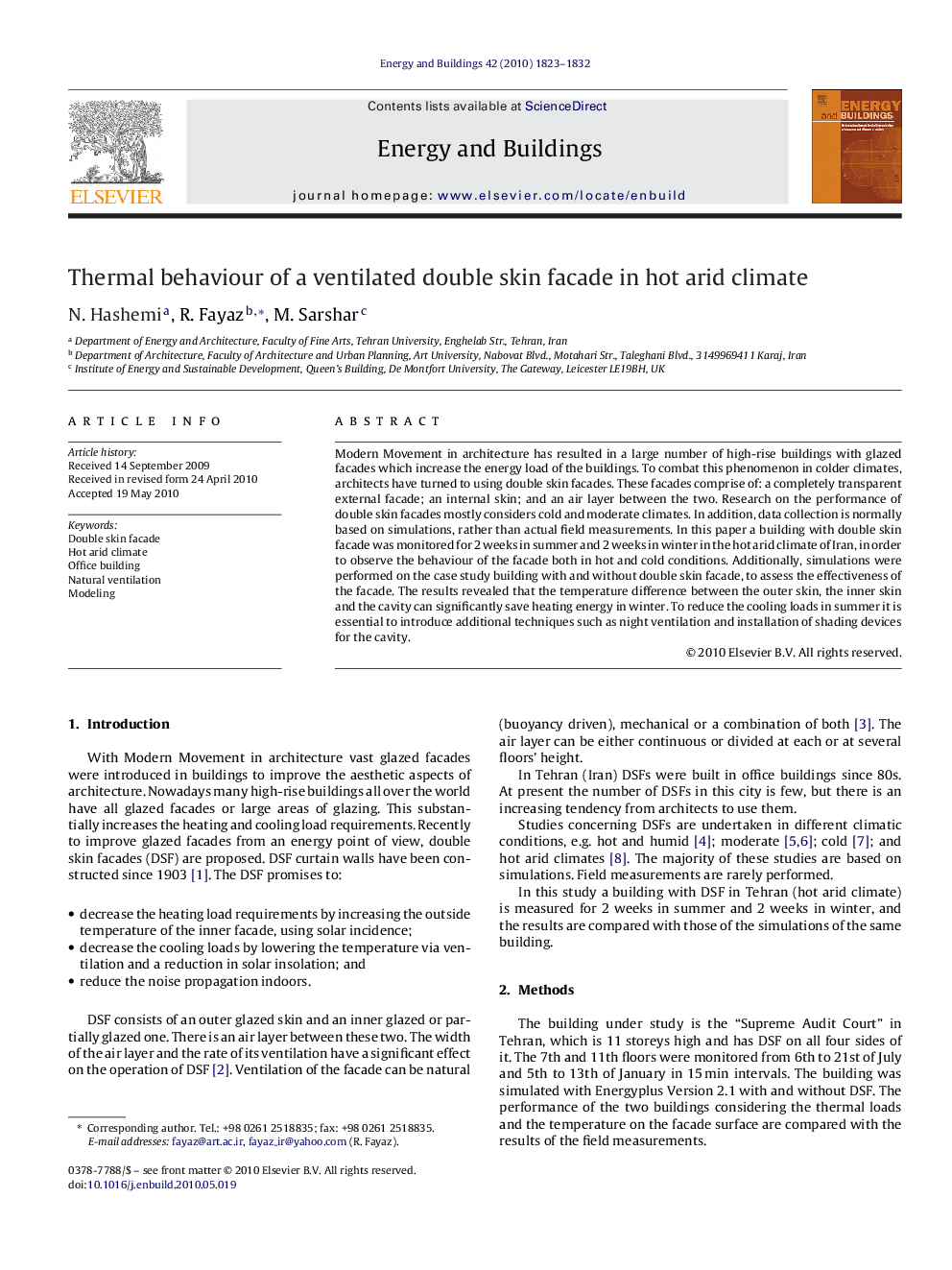| Article ID | Journal | Published Year | Pages | File Type |
|---|---|---|---|---|
| 264608 | Energy and Buildings | 2010 | 10 Pages |
Modern Movement in architecture has resulted in a large number of high-rise buildings with glazed facades which increase the energy load of the buildings. To combat this phenomenon in colder climates, architects have turned to using double skin facades. These facades comprise of: a completely transparent external facade; an internal skin; and an air layer between the two. Research on the performance of double skin facades mostly considers cold and moderate climates. In addition, data collection is normally based on simulations, rather than actual field measurements. In this paper a building with double skin facade was monitored for 2 weeks in summer and 2 weeks in winter in the hot arid climate of Iran, in order to observe the behaviour of the facade both in hot and cold conditions. Additionally, simulations were performed on the case study building with and without double skin facade, to assess the effectiveness of the facade. The results revealed that the temperature difference between the outer skin, the inner skin and the cavity can significantly save heating energy in winter. To reduce the cooling loads in summer it is essential to introduce additional techniques such as night ventilation and installation of shading devices for the cavity.
